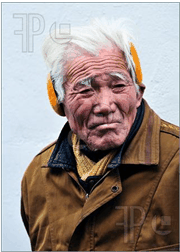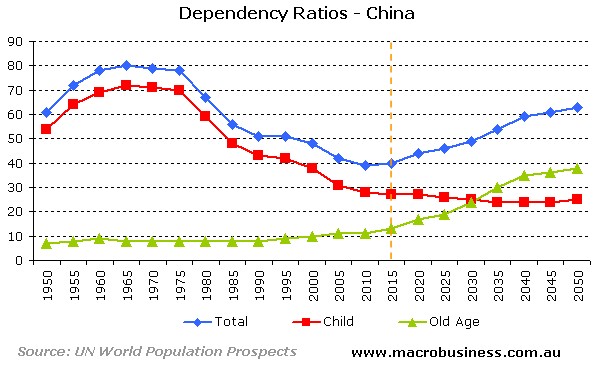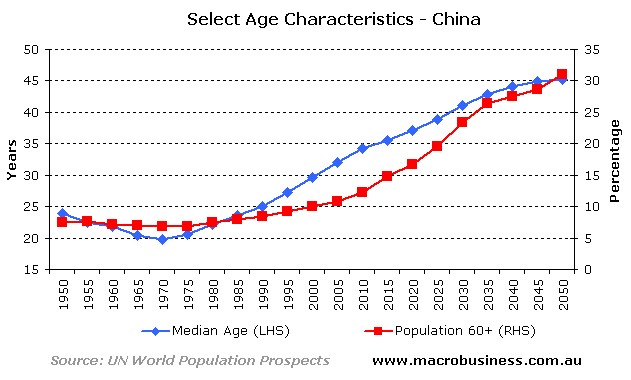
The 21st century will be the century of old age, where declining birth rates meet longer life expectancies. Nowhere are these demographic shifts occurring as quickly as in China, which is facing demographic challenges that threaten to slow its long-term expansion.
China’s demographic headwinds stem from its ‘one child policy’, which was brought into effect in 1979 and is credited with preventing around 400 million births from 1979 to 2010. This policy initially produced a population pyramid optimal to economic growth – that is, where the largest segments of the population were neither young nor old, but in the middle (i.e. working age).
This relationship is shown in the below chart, which maps China’s dependency ratios – i.e. the ratio of the non-working population, both children and the elderly, to the working age population. As you can see, the precipitous fall in China’s birth rates from the mid-1970s caused a sharp fall in the dependency ratio which, other things equal, increased China’s growth potential.

However, the demographic blessing provided by the one child policy is beginning to turn into a curse. As China’s population ages, an inverted pyramid is beginning to develop, whereby too few workers might be left supporting an army of retirees.
In many ways, China’s demographic trends are closer to its developed nation counterparts. Of its 1.33 billion citizens, 12% are currently aged 60 plus. However, over the next two decades the retired segment will grow rapidly, with those aged over 60 years doubling to around 24% of the population (see below chart).

Marshall Meyer, a professor of management at Wharton University of Pennsylvania, recently described some of the potential implications arising from China’s ageing population.
Thanks to the inverted pyramid…fewer workers will be available to expand manufacturing output as the number of retirees gets larger. In addition, China will have to spend more on social security and medical care. Yet under the current system, it is already “very hard to collect benefits,” suggesting that “a lot of people will have to draw down on their savings.” Little support from family members can be expected in a society where there is one grandchild for every four grandparents, he adds, which means that the continued aging of China “will put [significant] stress” on its society.
Meyer predicts that the Chinese workforce will start to shrink in absolute terms in 2015. Already, he notes, younger workers — those under the age of 25 — are declining in absolute numbers. All other things being equal, when the percentage of older workers increases, labor costs increase, since older workers are less productive in manual jobs…
So far, China’s growing prosperity has been based largely on its ability to manufacture lower-end products at competitive prices. But as costs rise in China, the country has to move up the value chain…
Whilst demographic shifts are inherently slow moving and less of an immediate concern than other issues afflicting the Chinese economy, these longer-term challenges are, nevertheless, significant and are likely to alter the path of China’s economic relationship with Australia.
Cheers Leith

